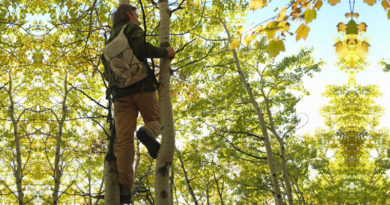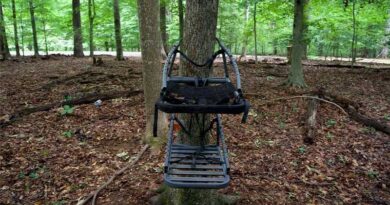Is Tree Climbing A Sport?
Tree climbing can be considered a sport, especially when competitive events and organized competitions are involved. Tree climbing competitions include a variety of techniques and challenges, such as timed ascents and descents, aerial rescue simulations, and limb walks.
Tree climbing is a sport that requires not only physical strength but also strategy, skill, and concentration. To climb trees safely and efficiently, competitors must use specialized equipment such as ropes, harnesses, and helmets. Tree climbing can be enjoyed as a recreational activity and a way to connect with nature in addition to competitive events.
Defining a Sport
To determine whether tree climbing can be classified as a sport, we must first define the term “sport.” The term “sport” refers to physical activities that involve competition, skill, and strategy. This definition, however, is not universally accepted, and there is considerable disagreement about what constitutes a sport.
According to the International Olympic Committee, a sport is defined as “an activity that involves physical exertion and skill in which an individual or team competes against another or others for entertainment.” This definition encompasses not only traditional sports like basketball, soccer, and swimming, but also activities like gymnastics, archery, and even e-sports.
A sport often includes rules and regulations, standardized equipment, and a governing body, in addition to physical exertion and competition. However, not all activities that meet these criteria are considered sports. Chess, for example, is classified as a sport by some organizations but not by others.
There are also unusual sports, such as cheese rolling, bog snorkeling, and wife carrying, that do not require traditional physical exertion or athletic skill but are still classified as sports due to their competitive nature.
As a result, while there is no one-size-fits-all definition of what constitutes a sport, it is generally agreed that it involves physical exertion, skill, strategy, and competition and that the activity is governed by rules and regulations.
Tree Climbing as a Sport
Tree climbing competitions have grown in popularity in recent years, and many people now consider tree climbing to be a sport. Climbers compete in these events by using specialized equipment such as ropes, harnesses, and helmets to climb trees safely and efficiently while also competing in various challenges.
Timed ascents and descents, aerial rescue simulations, and limb walks are all common events in organized tree climbing competitions. Climbers in these events must use a combination of strength, skill, and strategy to complete the challenge in the shortest amount of time or with the greatest degree of accuracy.
Climbers must use their strength and endurance to ascend trees and complete various challenges, making tree climbing a physically demanding sport. Climbers must also know how to use their equipment effectively and navigate the unique features of different trees, which necessitates a high level of skill.
Tree climbing as a sport requires a high level of mental focus and concentration in addition to physical and technical abilities. Climbers must be able to remain calm under pressure and make quick decisions in a difficult and often unpredictable environment.
Recreational Tree Climbing
While competitive tree climbing events are the most visible aspect of tree climbing as a sport, many people enjoy it as a recreational activity as well. Climbing trees for recreation and relaxation, rather than competition, is what recreational tree climbing entails.
Tree climbing for recreation can be a great way to connect with nature while also experiencing the thrill of climbing trees in a safe and controlled environment. It can also provide climbers with a unique perspective on the natural world, allowing them to see the environment from a different perspective and appreciate the beauty of trees in a whole new way.
Depending on personal preference, recreational tree climbing can be done alone or in a group. Many people find it to be a peaceful and meditative activity that allows them to disconnect from the stresses of everyday life and connect with nature more deeply.
While recreational tree climbing does not require as much physical exertion or competition as competitive tree climbing events, it does necessitate a high level of skill and attention to safety. Climbers must use specialized equipment and adhere to strict safety procedures in order to climb trees safely and without causing harm to themselves or the environment.
Equipment Used in Tree Climbing
Tree climbing, whether done for competition or recreation, requires specialized equipment to ensure safety and efficiency. Here are some of the key pieces of equipment used in tree climbing:
- Climbing Ropes: A tree climber’s most important piece of equipment is climbing ropes. They are used to secure the climber to the tree and provide stability and support while climbing. Climbing ropes are usually made of high-strength synthetic material, such as nylon or polyester, and are intended to withstand the stresses of climbing.
- Harnesses: To secure the climber to the climbing rope and offer support and stability while climbing, climbing harnesses are used. They typically come in a variety of sizes and styles to fit various body types and preferences. They are typically made of lightweight, strong materials like nylon.
- Helmets: Helmets are crucial for shielding the head and face from flying debris such as falling tree branches. They should always be worn while climbing and are typically made of a lightweight, impact-resistant material like polycarbonate.
- Ascenders and Descenders: Mechanical tools called ascenders and descenders are used to assist climbers as they ascend and descend the climbing rope. They function by grabbing the rope and enabling the climber to easily move up or down it.
- Carabiners: Carabiners are used to secure climbing gear to the climbing rope or harness. They are available in a variety of shapes and sizes and are usually made of a lightweight, high-strength material such as aluminum or steel.
- Footwear: Proper tree climbing footwear is essential because it provides grip and stability on the tree trunk and branches. Climbers usually wear climbing shoes or boots designed to provide traction and support while climbing.
To ensure safety and efficiency, tree climbing necessitates a variety of specialized equipment. Climbers should always use high-quality equipment and adhere to strict safety procedures when climbing for competition or recreation to ensure a safe and enjoyable climbing experience.
Conclusion
While it is debatable whether tree climbing is a sport, there is no doubt that it requires a unique combination of physical, technical, and mental abilities. Competitive tree climbing events provide a challenging and exciting way to demonstrate these skills, whereas recreational tree climbing provides a peaceful and meditative connection with nature. Whatever the motivation, it is critical to prioritize safety when climbing trees, as well as to use high-quality equipment and adhere to strict safety procedures. Tree climbing, whether for competition or recreation, is a rewarding and engaging way to challenge oneself and appreciate the beauty of nature from a different perspective.




